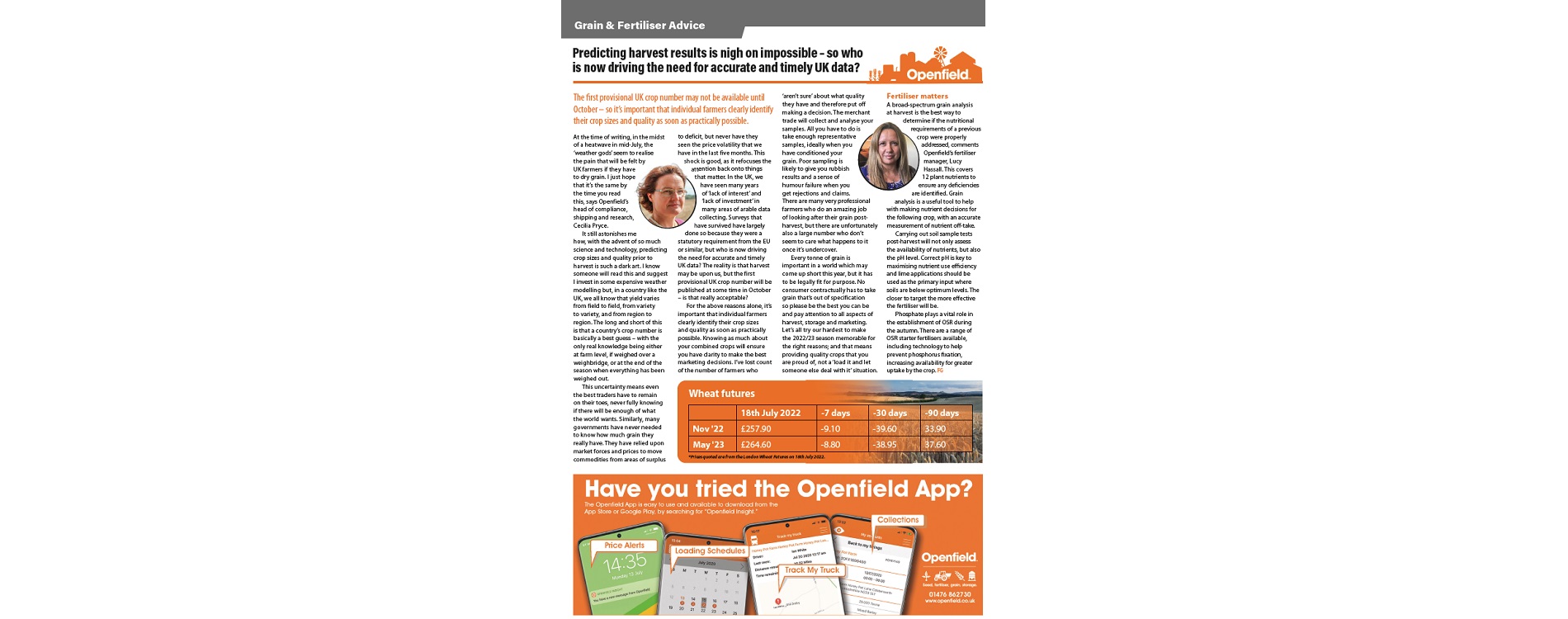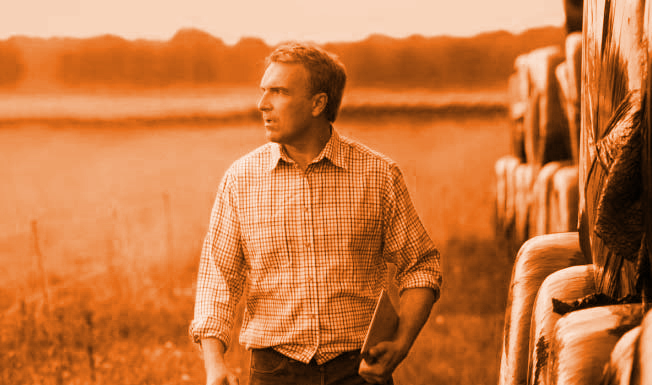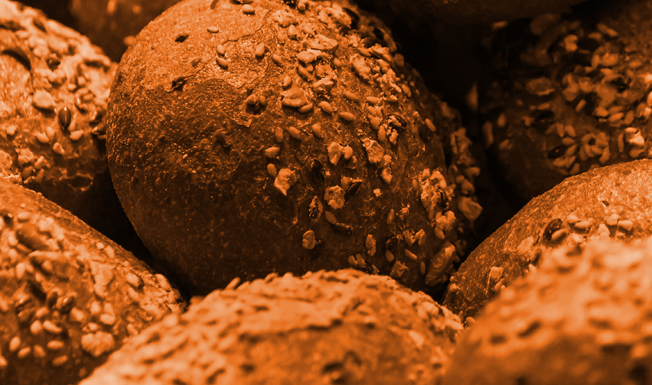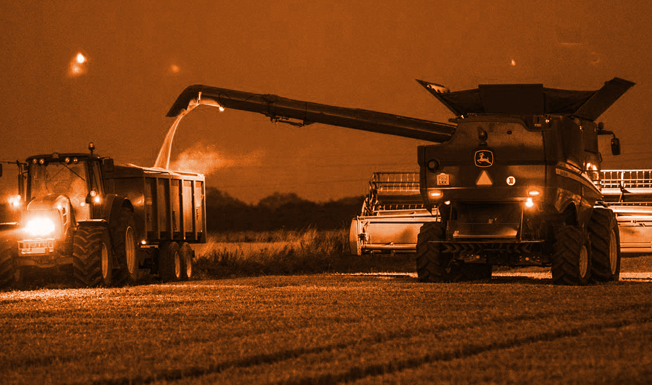Predicting harvest results is nigh on impossible – so who is now driving the need for accurate and timely UK data?
The first provisional UK crop number may not be available until October – so it’s important that individual farmers clearly identify their crop sizes and quality as soon as practically possible.
At the time of writing, in the midst of a heatwave in mid-July, the ‘weather gods’ seem to realise the pain that will be felt by UK farmers if they have to dry grain. I just hope that it’s the same by the time you read this, says Openfield’s head of compliance, shipping and research, Cecilia Pryce.
It still astonishes me how, with the advent of so much science and technology, predicting crop sizes and quality prior to harvest is such a dark art. I know someone will read this and suggest I invest in some expensive weather modelling but, in a country like the UK, we all know that yield varies from field to field, from variety to variety, and from region to region. The long and short of this is that a country’s crop number is basically a best guess – with the only real knowledge being either at farm level, if weighed over a weighbridge, or at the end of the season when everything has been weighed out.
This uncertainty means even the best traders have to remain on their toes, never fully knowing if there will be enough of what the world wants. Similarly, many governments have never needed to know how much grain they really have. They have relied upon market forces and prices to move commodities from areas of surplus to deficit, but never have they seen the price volatility that we have in the last five months. This shock is good, as it refocuses the attention back onto things that matter. In the UK, we have seen many years of ‘lack of interest’ and ‘lack of investment’ in many areas of arable data collecting. Surveys that have survived have largely done so because they were a statutory requirement from the EU or similar, but who is now driving the need for accurate and timely UK data? The reality is that harvest may be upon us, but the first provisional UK crop number will be published at some time in October – is that really acceptable?
For the above reasons alone, it’s important that individual farmers clearly identify their crop sizes and quality as soon as practically possible. Knowing as much about your combined crops will ensure you have clarity to make the best marketing decisions. I’ve lost count of the number of farmers who ‘aren’t sure’ about what quality they have and therefore put off making a decision. The merchant trade will collect and analyse your samples. All you have to do is take enough representative samples, ideally when you have conditioned your grain. Poor sampling is likely to give you rubbish results and a sense of humour failure when you get rejections and claims. There are many very professional farmers who do an amazing job of looking after their grain postharvest, but there are unfortunately also a large number who don’t seem to care what happens to it once it’s undercover.
Every tonne of grain is important in a world which may come up short this year, but it has to be legally fit for purpose. No consumer contractually has to take grain that’s out of specification so please be the best you can be and pay attention to all aspects of harvest, storage and marketing. Let’s all try our hardest to make the 2022/23 season memorable for the right reasons; and that means providing quality crops that you are proud of, not a ‘load it and let someone else deal with it’ situation.
Fertiliser matters
A broad-spectrum grain analysis at harvest is the best way to determine if the nutritional requirements of a previous crop were properly addressed, comments Openfield’s fertiliser manager, Lucy Hassall. This covers 12 plant nutrients to ensure any deficiencies are identified. Grain analysis is a useful tool to help with making nutrient decisions for the following crop, with an accurate measurement of nutrient off-take.
Carrying out soil sample tests post-harvest will not only assess the availability of nutrients, but also the pH level. Correct pH is key to maximising nutrient use efficiency and lime applications should be used as the primary input where soils are below optimum levels. The closer to target the more effective the fertiliser will be. Phosphate plays a vital role in the establishment of OSR during the autumn. There are a range of OSR starter fertilisers available, including technology to help prevent phosphorus fixation, increasing availability for greater uptake by the crop.




